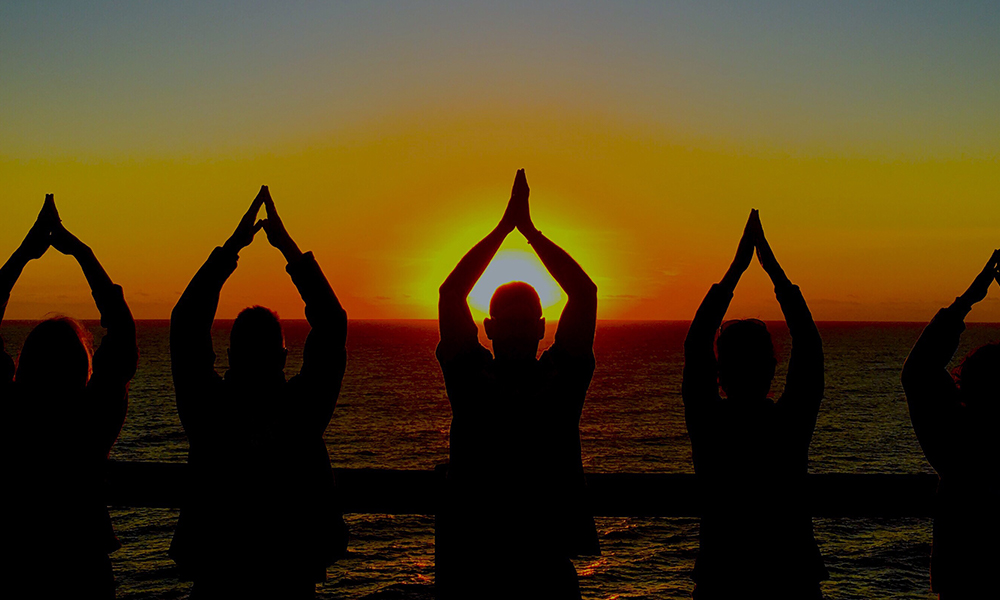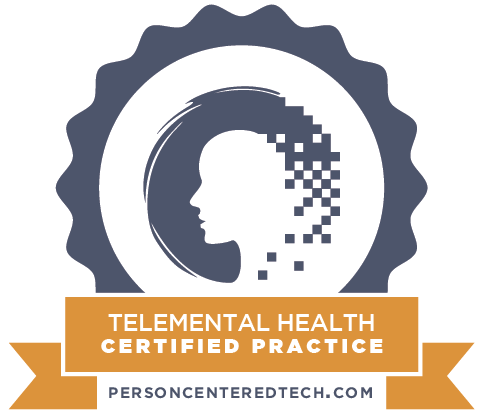Resilience – Self-Care – Intention and the ’S
We all know about self-care, and resilience has become a word I seem to hear around every corner these days. The horse is the true definition of resilience. They have evolved from small pig-like, three toed creatures into the majestic strong animals I have the pleasure to work with every day. They embody the definition of resilience: “The capacity to recover quickly from difficulties.” How do we develop this in ourselves, our children, our employees?
While I am a licensed professional counselor and my perspective comes from my work in the Eagala (www.eagala.org) model of equine-assisted psychotherapy, I hope I am able to help the reader see that this is relevant to everyone, every day, everywhere.
In our Equine Assisted Growth and Learning Association (EAGALA) trainings we learn to use the acronym SPUD’S. We look for Shifts, Patterns, Uniqueness, and Discrepancies in the actions and words of our clients and the presentation and interactions of the horses. I chose to carry this out of the office and into my world. It forces me to pause and helps me stay objective. The SPUD is the easy part. It is the ‘S that gets tricky. We run entire workshops focused on the ’S. It’s the three fingers pointing back at yourself when you are pointing at someone or something else. It represents our own Stuff. As a therapist I need to continually be aware of my triggers, projection, transference, counter transference etc and how it affects my interactions in the world. I have to be willing to actively engage in my own therapeutic work as it presents. In the office, it can be easy to miss or to put aside the ’S. However, in the arena it is another story. The horses know when someone is incongruent and/or they know when we are bringing our “Stuff” into the arena. They will call us out right in front of our clients. We have to check our “stuff” at the gate. If there is something lingering out of our awareness they will call it to attention.
Stepping out of the arena and into the world, want can we do to minimize how our “stuff” impacts our relationships? I believe self-care is key. I see self-care as having 3 levels – the big get away vacations and our own therapy, the common bubble baths, massages, treat yourself sort of things, and the moment to moment daily practices that become part of who we are. All are important, but it is in the daily practices that we build resilience. The resilience skills that we teach as daily practices become the pebble in the water. First an increase in interoception – with this comes increased awareness and mindfulness – followed by greater insight to identify the ’S and address them. By knowing ourselves better from the inside out, we can then better engage with those around us. As a bonus, when we have mastered these skills and regulate ourselves, others become better able to regulate themselves. Experiment with this… the next time your kids, coworkers, family members are quarreling or having a disagreement take a moment to pause and notice your breath. Maybe take a step closer if you can. Just keep noticing your breath. See what happens. I know it sounds way too simple. It is simple – it is not easy. This is where intention comes to play. When we can pause and be more intentional in our interactions and observations we can often step away from our ’S in the moment and feel more confident in addressing them in a professional manner.
I tell our clients that the horses are here to meet them in the moment, without judgment and ask them to offer themselves the same. The last spin I will put on this blog is a reminder to look at your world through the lens of information. The lens of judgment does not allow for healing, growth or learning. Encounter your ’S with excitement in the knowing that as you address them you become lighter, brighter, more self-aware, and better able to engage in the world with clarity and intention.
As a 28 year old non-binary Trans masculine individual who has gone through multiple self-evaluation periods, I’ve come to the conclusion, deep down we are all beings looking to grow strongly and beautifully. It is partially our environment that either hinders or helps us do so – PCS has provided a supportive space which made room for me personally to garden an environment that allowed growth. I realized, the grass is greener where we water it.
I began to really sit with myself and I began to water myself. I started to focus on my physical health with the theory that, “If I don’t use it, I lose it.” I began to focus on my mental health as I needed to fix the foundation I was building within. The more I stayed in tune with what I wanted instead of what others may have wanted of me, little shifts subtly took place. I started to plant seeds of how I pictured my garden, not one envisioned for me.
In a world where it seems scary to be authentically who I am, I haven’t allowed it to keep me from blossoming. We were meant to go through seasonal circumstances and within each season, there’s handsomeness and beauty. There’s self-love that transpires and when we have a hold of it, we shine.
My recent light brought me to write the below poem,
“March coming to a close,
Yet I’m more open than ever.
An anticipated chapter; I knew this time would come.
This time where every step feels worth the lunge.
A time where the shoes I’m wearing finally fit.
Comfortably.
I finally see – myself in mirrors.
I finally hear – myself in echoes.
And somehow,
It’s like, I finally let go.
I let go of fear,
And replaced it with faith.
I let go of anger,
And replaced it with love.
I let go of judgment,
And replaced it with acceptance.
Yesterday prepared me for today.
God knew I would see this day.
I was always worth it,
I just had to believe it too.”
And, I believe in you.
-Vané R. Moreno
He/him/She/her
Empathy. This word seems to be thrown around a lot, but what really is it? First, it is important to differentiate between sympathy and empathy.
According to Mariam Webster Dictionary, sympathy is defined as “the feeling that you care about and are sorry about someone else’s trouble, grief, misfortune, etc.” For example, a common gesture and expression of sympathy is sending a sympathy card when a good friend loses a loved one. It shows this person cares and is offering support.
Empathy takes it a step further. Empathy is connection. Empathy is the “let me step into your shoes” emotion. Sharing the emotions of another is one way people find connection. To truly step into the shoes of another involves risk and vulnerability. It involves being in touch with your own emotional experience to truly experience and share the emotions of another.
Oftentimes sympathy is easier to access, as this emotion does not require as much personal discomfort. Empathy, on the other hand, feels risky. A frequently difficult moment to feel empathy is when we ourselves have wronged and/or hurt someone else. This often leads to a sense of shame, which often carries the message “I am bad”. Shame is quick to block empathy, promoting disconnection in our intimate relationships where we truly desire the most connection. Shame hinders our ability to fully step into the shoes of another even if we are under the impression that we are being empathetic.
Thus, a powerful question to ask yourself might be “Am I being sympathetic or empathetic?” The answer to this question can be answered in how you are responding to the person hurting. For example, if you are in a space of attempting to “fix it” for them, you are most likely experiencing sympathy. Empathy does not provide answers. Empathy resembles sitting in the uncomfortable emotion with the other person and tolerating the discomfort. Empathy will undeniably breed more connection with the people in your life if you are able to access it. It does undoubtedly take practice as it often does not come natural to some.
Here are some practical steps to cultivating more empathy:
- As stated above, work to get in touch with your own emotions. If you do not have empathy for yourself, you will likely have trouble expressing empathy to others.
- Address your shame (if you have it). A good way to reduce shame is to share, and share again, and share some more. The more people who can hear your story the better.
- Practice sitting with uncomfortable emotions. We often work very hard to avoid any uncomfortable emotion. Empathy requires us to find comfort in the discomfort.
References:
Merriam-Webster. (n.d.). Sympathy. In Merriam-Webster.com dictionary. Retrieved October 25, 2021, from https://www.merriam-webster.com/dictionary/sympathy
The increase in discussion around self-care in our society today is important. Our culture tends to praise success to the extent that our well-being is compromised leaving people feeling overworked, overwhelmed, malnourished, and under slept to name just a few harmful effects. The pervasiveness of these damaging consequences has fortunately led to a rise in discussion of the importance and value of mental health and, in turn, self-care.
Self-care qualifies differently for different people. For some, self-care may look like taking a warm bath, curling up to read a book, or going for a walk outside. For others it may be taking an hour to go for a solo car ride, getting to bed early, or calling a close friend. And still for others, self-care may include playing a round of golf, journaling, or prioritizing a nourishing meal. The way self-care looks may be different for everyone but the overarching factor that ties these things together is the recharge, revitalization, and reset that these relatively small, but intentional acts provide for a person.
But can we take self-care too far? Self-care can, in fact, swing to the far end of the pendulum. For example, a person may not “feel great” one or multiple days in a row and consistently judge this as reason enough to call in sick to work. Another instance may be a person discounting time and energy devoted to friends or family for long stretches of time in the vein that their time alone should always reign supreme. Another experience may be that responsibilities to self, family, friends, work, school, or the like are continually swept to the side, saddled on the belief that self-care must be the priority. And while there can certainly be times in a person’s life when these actions are, indeed, appropriate, I think it is important, even vital, to be able to discern when self-care is being utilized too heavily at the expense of a person’s own self-resiliency and growth.
Our trajectory of self-care and self-resiliency can be thought of as a bit like a slingshot. Stay with me here. We want to provide ourselves with enough experiences that push us and allow us the beneficial types of stress; the stress that allows us to get a bit uncomfortable, expand ourselves, and grow. And at the same time we want to aim to balance this with enough time to come back to our safe places and people in order to rebuild and recharge. It’s this delicate balance where we are pulling our slingshot back enough that we are headed toward growth, but not too much so that the sling shot snaps. Nor are we pulling it back too little so that we simply remain stuck, not stretching ourselves into the spaces that offer us the golden duo of discomfort and the ensuing growth and development that we need to thrive. When we can hone in on this balance of taking time to care for ourselves while also respecting the responsibility we owe to ourselves to grow and promote self-resiliency, we can settle into a healthy sweet spot. We can know the difference between needing to take a day off from work or needing to call a friend to get things off our chest. We can learn the difference between when we need time alone and when time with friends or family may actually be very valuable and fruitful. And we can know the balance between our responsibility to our commitments, and when we need to take a mental health break. But how do we know where that sweet spot is? Through trial and error, of course. In getting a bit messy, in seeing what works and what doesn’t, and in reminding ourselves of the beauty of our imperfection and humanity. No one has this down perfectly. Our lives continually change, ebb, and flow, and we will continue to come up against new and unique challenges that put our current modes of being into disarray. When this happens we can either hole ourselves up, afraid to make the wrong moves, or we can remind ourselves that there is no perfect way, trust ourselves, and pull back that slingshot.
By Michaela Ortega, Intern
Jump in, the waters not too deep.
When individuals present in treatment with significant trauma it understandably may give pause to a treating professional. Whether a single devastating event or a constellation of experiences, which lead to a designation of complex trauma, how best to initially treat the individual is often questioned. Recently, I pulled out an article from the journal of Depression and Anxiety a colleague sent me some time ago. The article by de Jongh and colleagues, Critical Analysis of the Current Treatment Guidelines for Complex PTSD in Adults (de Jongh, et.al., 2016, holds the potential to generate an interesting conversation. The following is not an exhaustive discussion of the topic, but rather a brief description of two perspectives which may influence the direction of treatment.
One encourages creating a safe environment by first stabilizing clients. This typically includes resourcing clients by teaching them self-regulation skills in order to build emotional, relational, and psychological competency prior to directly working on the trauma. Once the client has developed a level of competency in self-regulating and the clinician believes they can tolerate working on their trauma, the trauma work begins. The other position believes clients enter therapy ready to work on their trauma and directly addresses it using a variety of evidence-based techniques. These positions are not necessarily at odds and yet are often treated as such.
In 2012 the Complex Trauma Task Force of the International Society of Traumatic Stress Studies (ISTSS) released The Expert Consensus Treatment Guidelines for Complex PTSD in Adults which identified support for a phased-based or sequential approach to complex PTSD (cPTSD) beginning with initial stabilization and skills building period prior to engaging in treating trauma. De Jongh and colleagues (2016), on the other hand, reviewed studies which “suggest trauma focused treatment without a prior stabilization phase is feasible and clinically beneficial for cPTSD, contrary to the recommendations of the guidelines” (p. 364). They went on to state the studies they reviewed did not support worsening of symptoms for those receiving trauma treatment and did not increase treatment drop out. They stated, “In our view, the evidence arguing for special stabilization procedures prior to trauma-focused treatment for patients referred to as having cPTSD is weak” (p. 366).
Most interesting de Jongh et.al. (2016) stated “For patients with more cPTSD presentations, the recommendation for an initial stabilization phase has the potential to result in a delay or restriction of access to effective trauma-focused treatments” (p. 367). They continued by sharing “Delaying trauma-focused treatment could also be demoralizing to patients by inadvertently communicating to them they are not capable of dealing with their traumatic memories, thereby reducing self-confidence and motivation for more active trauma processing. Labeling a patient as ‘complicated’ or ‘complex’ has a potential iatrogenic effect of giving the patient the impression that ‘traditional’ treatments will not be effective or that special or longer treatments are necessary” (p. 367).
Perhaps these two perspectives support clinicians considering which approach best fits their client. Certainly, there are instances when helping a client to feel more resourced and confident supports them engaging more productively with their trauma. On the other hand, many clients are ready to dive into sorting through their traumatic past. I have found it most productive for me to assess the client’s belief about self and how they have managed life while carrying a tremendous pool of pain. I believe de Jongh and colleagues encourage us as clinicians to strengthen our belief in the capabilities of our clients. This supports a process of directly addressing trauma while concurrently resourcing individuals. Imagining the strength, resolve, and resourcefulness of a child to continue moving forward in the face of what are often horrifying experiences. Coping through addiction, withdrawal, perfectionism, people pleasing, etc. do not define the individual rather reflect their creativity and desperate desire to somehow make it through life. Helping clients honor these efforts while simultaneously supporting an experiential process, one which affirms they are currently the most capable adult in their life to nurture themselves through their painful past. There may be moments where the work slows in order to manage a crisis, but even this process can become another resource for moving forward.
I know my bias for diving is reflected in this writing and I am clear for some of my clients this confidence in them has left them feeling I lack empathy for the depth of their struggle. This always reflects a miss on my part in slowing and connecting with the client. I share this in recognition of the risks, whichever approach a therapist takes, and with an increased understanding there is not “a right way” to approach trauma. We can only possess the willingness to jump in and recognize the water is rarely too deep.
De Jongh, A., Resick, P.A., Zoellner, L.A., van Minnen, A., Lee, C.W., Monson, C.M., Foa, E.B., Wheeler, K., Broeke, E.t., Feeny, N., Rauch, S.A., Chard, K.M., Mueser, K.T., Sloan, D.M., van der Gaag, M., Rothbaum, B.O., Neuner, F., de Roos, C., Hehenkamp, L.M., Rosner, R. and Bicanic, I.A. (2016), CRITICAL ANALYSIS OF THE CURRENT TREATMENT GUIDELINES FOR COMPLEX PTSD IN ADULTS. Depress Anxiety, 33: 359-369.
What image comes to mind when you think, “Spirituality?” Religion? Incense? Meditation? Family? Judgment? Abuse? Ridiculous? When spirituality is mentioned as a core component of 12-step work, it can be incredibly uplifting resource, or a monumental obstruction. Having a basic understanding of spirituality can be helpful in gaining new insights for someone who already embraces the spiritual journey, and can open possibilities for someone who has negative associations with the concept.
Ideas that can be helpful in exploring spirituality include: What brings meaning and purpose to your life? Where do you feel connected? and Does this meaning make a difference?
First, what brings meaning and purpose? We can look to various faith backgrounds and find meaning within the teachings of the world’s religions that have given direction and hope to people for centuries. This rich history draws on the thoughtful reflection of men and women on the human experience as it relates to the Divine. However, for some, this association brings memories of emptiness, irrelevance, or even abuse. If this true, then meaning can be found in other beliefs or traditions, such as “love one another,” “being a world citizen,” “community,” or “caring for nature.” Whether the meaning is found in your faith tradition, or some of the previous statement, it can provide direction in life outside of yourself.
Second, where do you feel connected? For those with traditional religious traditions it is not enough to simply have a theology or belief system. It is important to have connection. In what ways does your faith help you connect to yourself, to others, and to God? Using prayer, meditation, religious services, small group experiences, can all play a part. Doing life in isolation is fertile soil for relapse. In non-traditional understandings of spirituality community is just as important, again, where in your life to you foster connection with yourself, others, and with something greater than yourself? Meditation, mindfulness, yoga can create more self-awareness. Step Groups, dinners with friends, game nights, and shared hobbies can be places where you connect with others. To connect with something greater than yourself can also be a recovery group, or maybe getting into nature for hiking, camping, or simply making time to walk your dog. Connection takes intention. Create opportunities.
Third, does your spiritual journey make a difference? Whether your path involves traditional or non-traditional beliefs if it does not influence you, you probably need to look deeper. Do you feel uplifted and valued, improving your sense of self? Do your beliefs and practices encourage you to continue to grow and learn? Do they move you towards empathy, compassion, forgiveness, honesty, humility? Are you living congruently? This requires an openness to allowing the purpose or meaning to have embraced and the connection you develop to shape you.
Starting your spiritual journey does not mean you have to embrace any particular faith. It is easy to discuss and even debate beliefs, theology, faith journeys. However, starting your path does not begin here. Creating space for different understandings of spirituality, creates space for people seeking sobriety and recovery. It is inclusive rather than exclusive. If you are starting this journey, and it is new for you, begin with what you know. It can aid you in your recovery and lead to rich life experiences.
Much like having too much sugar can lead to diabetes or too much sunlight can increase the risk of skin cancer, consuming too much news can be harmful to mental health and overall well-being. Studies have linked news consumption to increased anxiety, reduction in sleep quality, and variety of other negative outcomes. This shouldn’t be too surprising. Most news outlets tend to focus on the negative aspects of the world. At the time of writing this post, Google News top headlines feature stories entailing sexual assault convictions overturned due to technicalities in the legal process, conspiracy theories, gun violence, and a host of other disturbing events. Of the more than 20 top headlines on Google News, only two were positive or neutral. I will admit that this is an anecdotal observation rather than a rigorously controlled scientific study, but I believe we can acknowledge that most news is rather negative.
While it is important that we have an informed public, there are diminishing returns and we eventually may be more misinformed rather than informed by an overconsumption of news. Being over exposed to news media contributes to a distorted view of the world. Based on the headlines mentioned above, it would seem that the world is an exceptionally inhospitable place that is unsuitable for leading a satisfying life. Violence, unrest, and controversy dominate the news cycles. As the saying in journalism goes, if it bleeds it leads. While there are many facts presented about the world within the news, these facts should be taken within the context of the global scale. Many troubling events occur on a daily basis around the world, and there are many positive and wonderful things happening everyday as well. People achieve their goals, children are born into loving families, life-changing opportunities are seized, and new relationships are formed just to name a few.
So what can we do about our personal consumption of the news to improve our mental health and overall well-being? Some sources suggest cutting out reading the news altogether. In my opinion, this may be a bit too far. I don’t see this as an all-or-nothing proposition. Instead, I would encourage you to consider taking a break from the news. Perhaps, take a week or two off from the news and see how you feel. Personally, I make a conscious decision to limit the time I dedicate to the news. In the past I was an avid news consumer, listening to news radio, podcasts, and reading far too many articles daily. I found that I was more anxious, worried about the future, and felt overwhelmed by all of the negativity. These feelings often caused me to double down and consume even more news. It became an all too familiar vicious cycle. What I’ve found is when checking the news every few days, I feel no more or less informed about the world than when I was glued to the daily news cycle. However, I do feel a lot better about being in the world and more balanced as an individual. I would encourage you to consider how being more mindful about the boundaries you set for the news might be of benefit. In improving your mental health, you will in turn contribute to a world filled with greater well-being. Wouldn’t that be great news?
As people, we construct our world to make sense. Despite our limited knowledge and understanding of the world, we are able to navigate complex situations primarily through the use of behavioral patterns and strategies. Perhaps as a result of our functional capacity, we gain a false sense of confidence regarding our understanding of the systems around us that form our world. This phenomenon wherein we overestimate our explanatory knowledge is known as the illusion of explanatory depth.
The illusion of explanatory depth was first researched in a study conducted at Yale University1. Within the study, participants were asked to estimate their understanding of common household objects such as locks, toilets, and zippers. Participants were then asked to write detailed explanations including the mechanisms by which each of these devices actually work. In doing so, participants quickly became aware of their limited understanding. Subsequently, participants lowered their subjective rating of understanding regarding each of the devices. It would seem that many of the ordinary objects we use in our daily lives are anything but ordinary and are, in fact, complex and brilliantly designed marvels of human ingenuity. It is only when we engage in the process of explaining these items that we fully come to realize and appreciate their complexity.
As I considered the illusion of explanatory depth I became curious regarding my understanding of not only common household objects, but also the thing I spend the most time with; myself. Do I actually understand myself to the depth that I believe I do, or is it just the illusion of explanatory depth in play? As a professional working within the mental health field, I regularly review personality assessments with clients. In doing so, I am often intrigued by the manner in which individuals come to understand themselves. We often believe we understand ourselves much better than we actually do. While some aspects of our personalities are quite apparent to each of us, much of the depth of our personality appears to exist outside of our passing observations.
Much like the zipper or lock within the aforementioned study, it is only when we actively engaged in the process of explaining the mechanisms of our personalities do we come to fully realize and appreciate the complexity found within each of us. Moreover, it becomes apparent that we are each challenged by engaging in accurate and effective self-assessment. I would encourage you to ask yourself the following questions:
“What is a personality?”
“What a does a personality do?”
“How does a personality work?”
In providing a detailed explanation to each of the questions above we can begin to understand ourselves better. Importantly, we can begin to outline how we might better meet our needs and the needs of others within our relationships. Given how much time we spend with ourselves and others, isn’t it time to better understand personality?
– Article by Jude Alatorre, Psy.D
1 Rozenbilt, L., & Keil, F. (2002). The misunderstood limits of folk science: An illusion of explanatory depth. Cognitive Science, 26, 521-562
There might be a handful of times in life where we feel the strong need to pause and reflect upon where we have been so we know where to go next. As we begin to see real signs that the pandemic is under control and of society returning to a version of what it was over a year ago, this seems like an important time to take inventory of what we are so eagerly looking forward to, as well as what is causing us unease. How have things changed for you and within you, for better or worse? What have you observed around you? The reality is no one person’s experience has been the same.
Some people have discovered reconnection with family and the beauty in getting back to basics while others have experienced death, devastating loneliness, addiction, depression, or abuse from those with whom they have had to be in close quarters. Some have found more creativity, motivation, and innovation to capitalize on these unique times while others have lost their direction, employment, or business entirely.
Still, some experienced very little or no economic or employment disruption and even thrived over the last year. So, while this is an experience we have had globally and together as a society, it has not necessarily been a collective one. As you prepare to transition back to a new version of “normal,” it seems important for all of us to reflect on a few concepts: What have you discovered is important to you? What have you discovered is unnecessary in “normal” and may actual block you from others you care about or important goals?
Over this year that has forced most of us to slow down and simplify our calendars, ask yourself what you discovered that surprised you about yourself and what makes your life meaningful.
A positive routine starts with a few small decisions repeated daily. These can be to take a moment to breathe, going for a walk with the dogs, writing in a journal, or just picking a moment to be grateful for the good things in your life. Picking the time of day to practice these routines is important as well. Whether you are a morning person or enjoy practicing your routine in the evening, setting a pattern is crucial to the long-term success of creating disciplines in your life.
The benefits of positive routines are countless, but they are easy overlook at a glance. It’s bigger than just getting some exercise when going for a walk, or reflecting on your week with a journal entry. Positive routines give you an overall sense of control in your life, a sense of calm that you are living with intention and that you are getting the best of your days, not your days getting the best of you. It is a stress reliever when you are steadfastly accomplishing these small tasks every day or week. It can be easy to get caught up in the 9 to 5 and to get stuck in autopilot. When creating a routine, there should be purpose and intention. Intention to fill up your cup, recharge, reenergize, and add to yourself versus taking away and deenergizing yourself.
The absence of positive routines in your life can have numerous negative effects on your overall well-being. Anxiety is a large biproduct of living your life without a plan and letting procrastination take hold. Without practicing the discipline of these habits, people feel like they have no “wins” to look back on and be proud of at the end of the day. They have a sense that their day is unstructured because they are easily distracted. Competing with everyday distractions is getting more difficult with the advent of technology, smart phones, and social media. Positive routines are the answer to allow you a time and place to indulge, because you feel as though you’ve completed what needed to be done.
Some ideas for positive habits:
- Waking up and going to sleep the same time everyday
- Opt for a book instead of scrolling though social media
- Write down and recite affirmations for your day i.e. I am capable, I am present, I am worthy
- Stretch first thing when you wake up and before bed
- Exercising daily
- Gratitude journal
Article by Liz Perry

 (480) 947-5739
(480) 947-5739 info@pcsintensive.com
info@pcsintensive.com


















